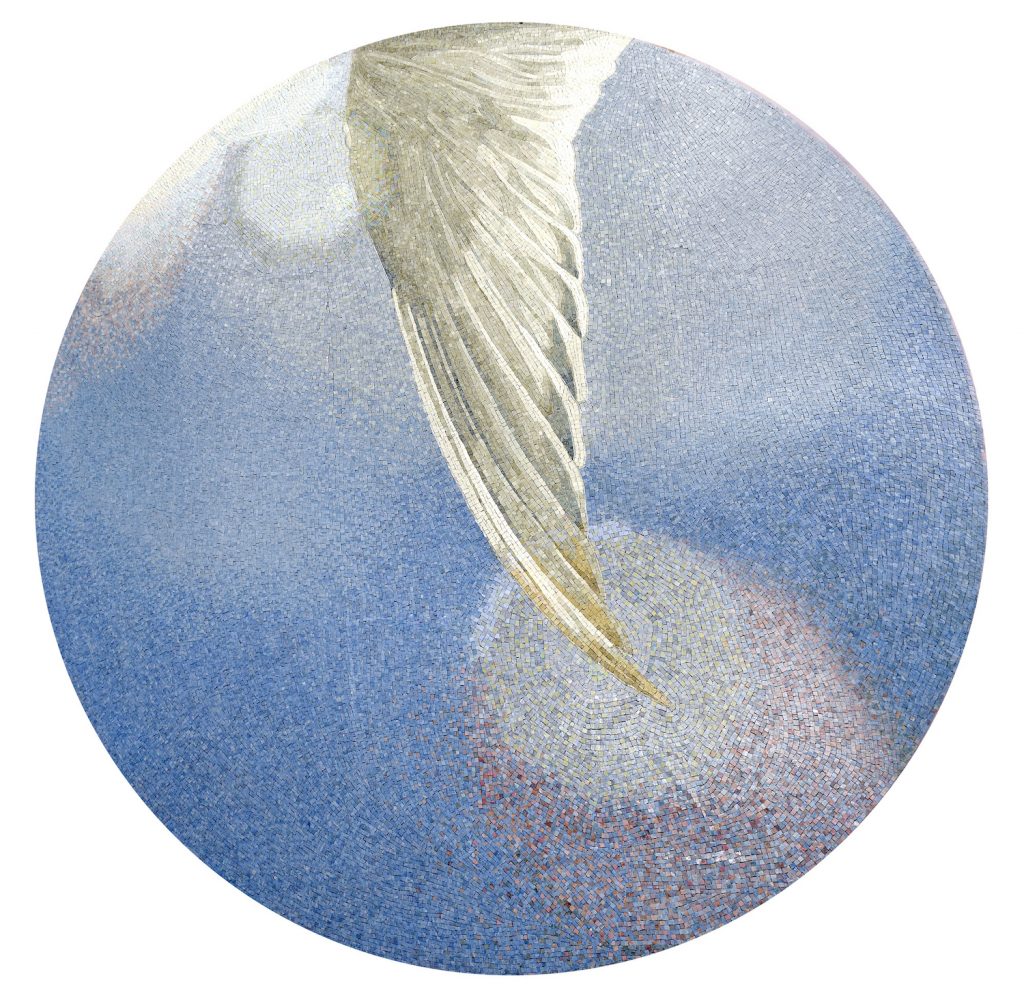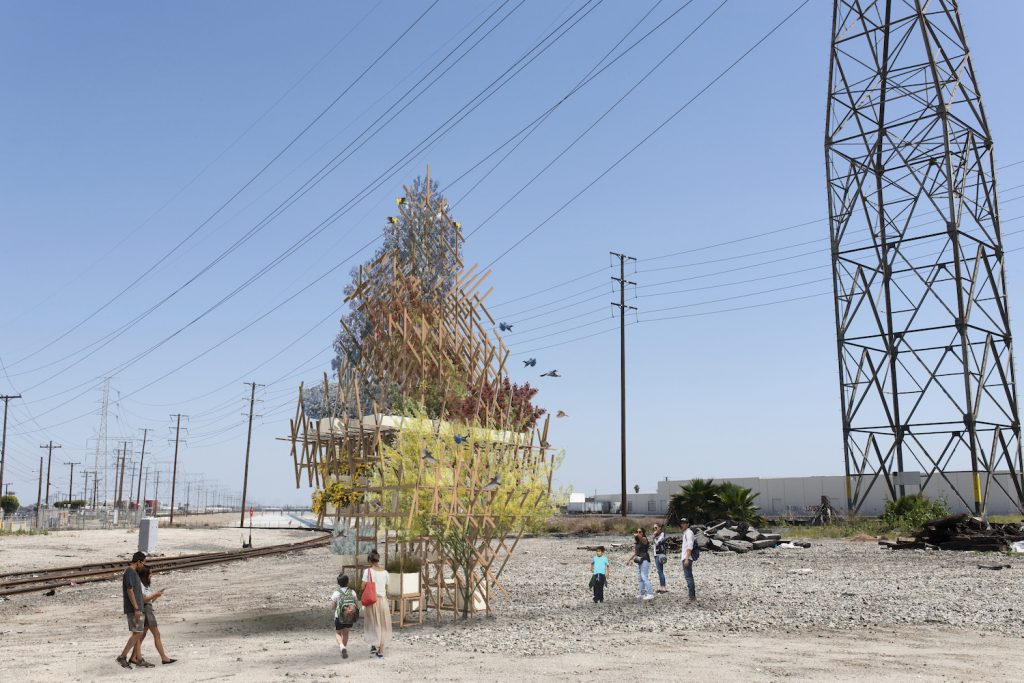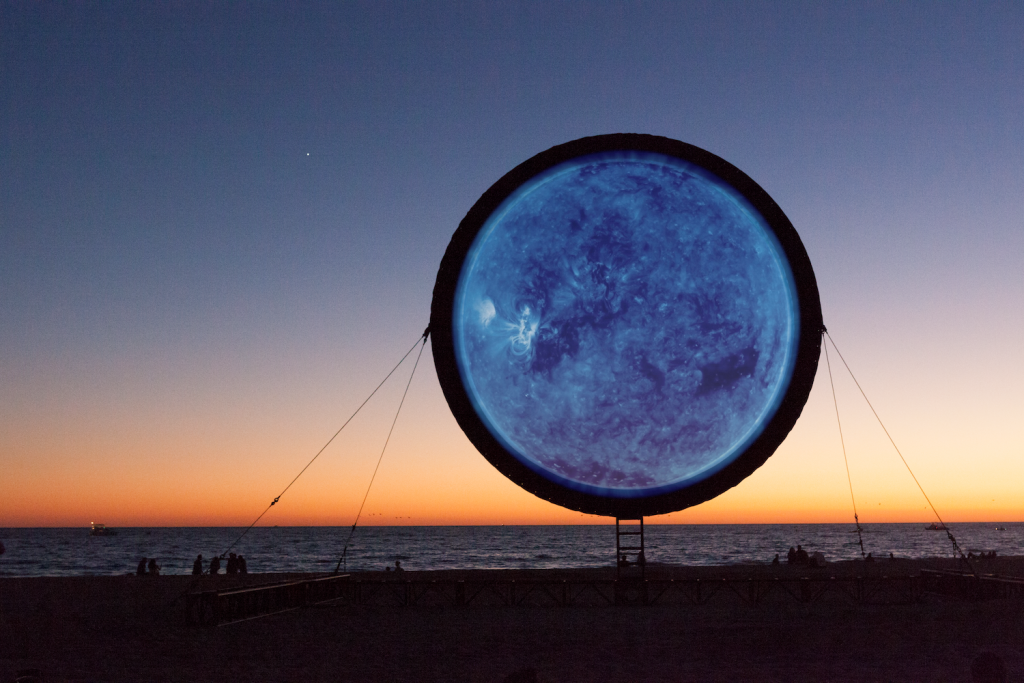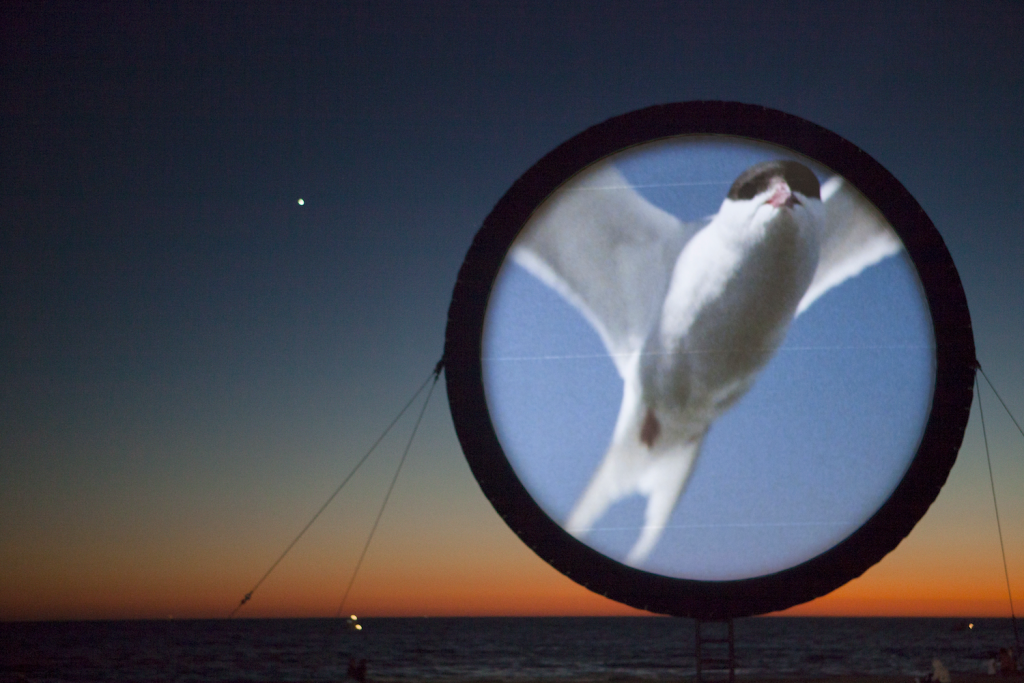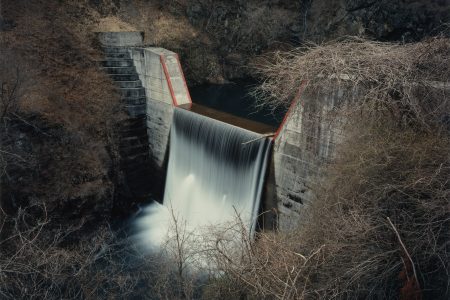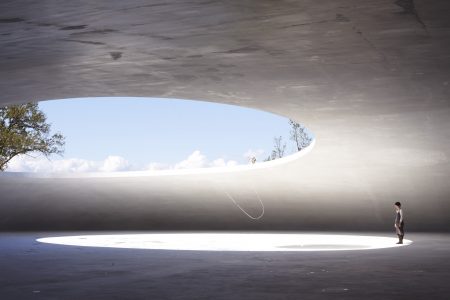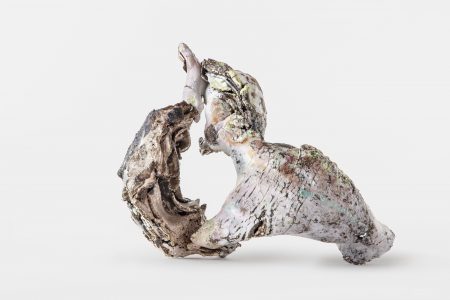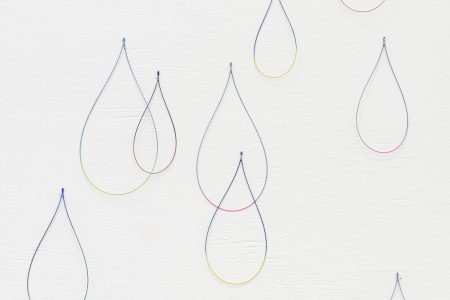
Rebeca Méndez – Learning From the Birds
Through an engaging body of work that includes murals, video, research and design, Rebeca Méndez, faces up to climate emergency and shows us how the migration of a bird connects deeply to the health of the environment.
The arctic tern is an elegant bird with a black mask, red beak and a white and grey plumage apt for its breeding ground in the polar north of the world. Each northern winter however it heads south, flying approximately 70,000 km to the relatively warmer climate of the Antarctic summer. Its route varies, but many of the five billion that make this regular migration and back will find themselves winging their way across California. As the stretched highways and urban sprawl of Los Angeles comes into view below, these birds might in turn be spotted by Rebeca Méndez, a Mexican-born designer, artist, academic and enthusiastic birder, who has lived in America for over forty years. The extraordinary tern is the subject of one of two murals that Méndez has produced recently for a newly-opened subway stop in the city. Circular, mimicking both the view through the artist’s telescope and the globe which the tern crosses, just a graceful wing is shown, aloft against the bright blue Californian sky.
The Expo/Crenshaw station is situated in an area with large Black and immigrant communities and it is easy to understand the journey of the bird, as it moves across the world, with little heed to nation-state, as symbolic of both the experience and problems faced by many of the humans who use the mass transit stop on a day-to-day basis, those especially who have come from elsewhere and who face prejudice for doing so. Yet Méndez’s interest in the tern extends much further back than this site-specific reading of CircumSolar, Migration 4 (2016–20), and hinges on the enforced mass migration that is already occurring due to the climate emergency, the mass animal and habitat extinction that that entails, together with the geopolitics of the changing landscapes of coastal lands and the Arctic and Antarctic regions. Birds often serve as indicator species for habitat health and Méndez has been researching the tern for over a decade, tracing its migration through field trips – bracing -25°C cold to journey to its northern home in a sailing boat – and film, sculpture and lectures. She has said “When I am at those edges you don’t take anything for granted”, and her work is a lesson in drawing our attention to a remarkable animal – and by extension – a world under threat.
In CircumSolar, Migration 1, a moving image work from 2013, for example, which debuted at an all-night arts festival in Santa Monica on a huge circular free-standing screen on the beach, framed by the big Californian sky, the ferocious Greenland Sea first comes into view. The half-hour film then takes in the icy Arctic landscape and finally the tern launches into the air against the grey light. It fills the screen, its face steely against the miles ahead. There is a certain irony to the work, that it takes the technology and artifice of artmaking to make visible the animals that cross the Californian sky so regularly. As is typical of Méndez’s film work – it has taken her to Iceland, the Svalbard archipelago in the High Arctic, the Atacama Desert in Chile, and White Sands and Death Valley in the United States – the images are beautiful. Yet there is also something distinctively disconcerting to how Mendez packages her nature footage: rumbling through the CircumSolar, Migration series is an ominous, awkward soundtrack that pulls us from mere comfortable enjoyment of the scenery. The composition is hard, combative, perhaps inspired by Karlheinz Stockhausen whom Méndez has often quoted in relation to her work. “We are all transistors, in the literal sense,” the German composer said in 1970. “People always think they are in the world, but they never realise that they are the world.” Méndez clearly wants us to understand that human and non-human-animals operate in a system that binds us in mutual dependence. If the metro stop mural was partly about community, it is a community that stretches beyond the human.
She has said she turned to art – growing up in Mexico City, her parents, both engineers, were concerned about her long-professed career choice – because it has the “capacity to invent and speculate about something” and enables her to embark on projects with “the eyes of today because the eyes of yesterday think they already know everything and there’s no potential in that”. Yet perhaps those parental concerns had an effect, because Méndez has always strayed way beyond theory and aesthetics to push for practical change. Méndez is a professor and chair of the Design Media Arts department at UCLA, the winner of many design awards and, in 2015, the founder of Counterforce Lab, a research practice. The latter is embarking on what they hope to be an ambitious conservation project, which again will be of benefit to migrating birds. The lab describes its proposed biophilia treehouses as “biodiverse hotspots”. The designs show scalable, lightweight structures that host myriad local plants on both vertical and horizontal platforms, flora which should attract visiting birds as well as well as nesting native species such as the Allen’s hummingbird, the California scrub jays, lesser gold- finches, mourning doves, nettles woodpeckers, western bluebirds and the oak titmouse. The treehouses will, Méndez and her team hopes, also attract humans. They are co-living spaces if you like, with pods in the base from which humans can view the birds, allowing for inter-species connections. Birds should be, in Méndez’s inspired vision, feathered friends with benefits.
This article originally appeared in the pages of TLmag36: All Is Landscape
rebecamendez.com
@rebecamendezstudio


